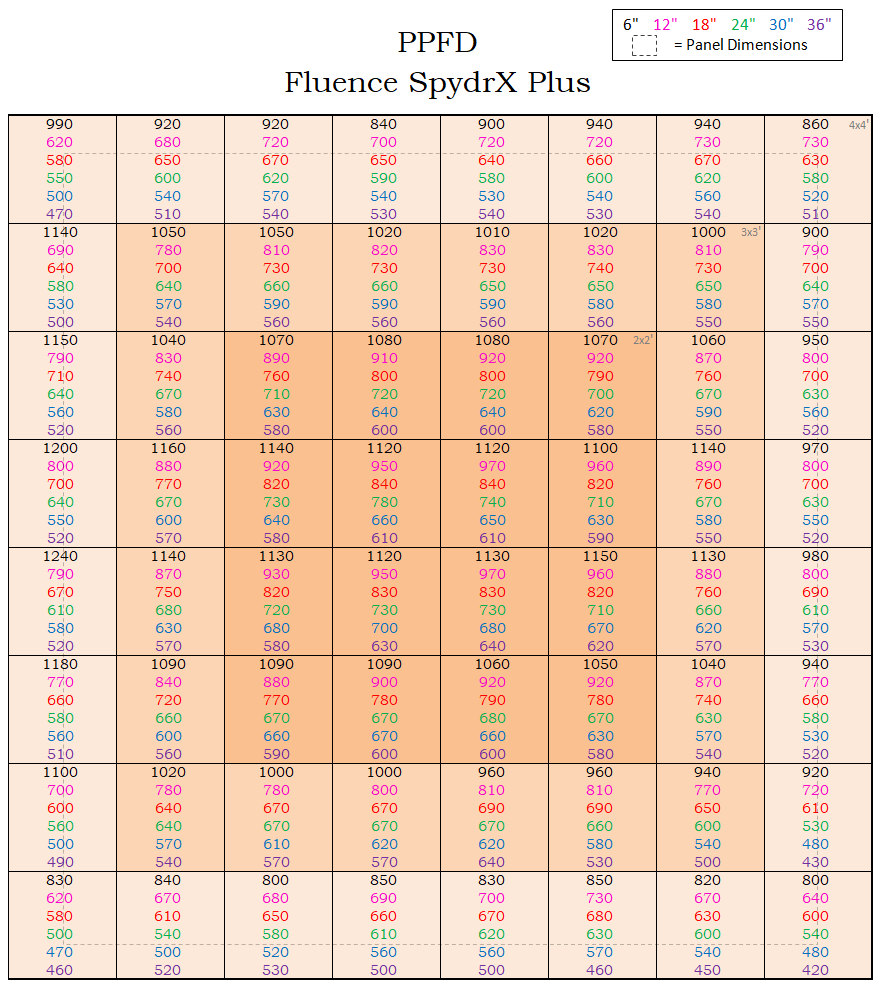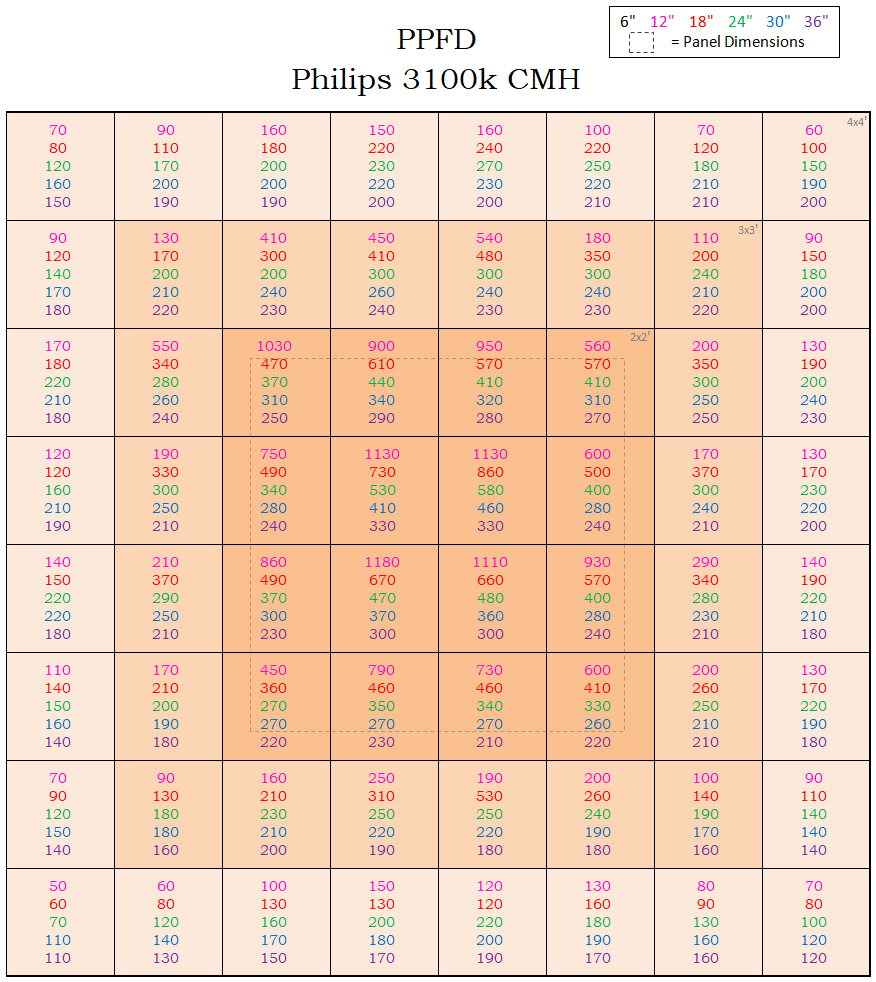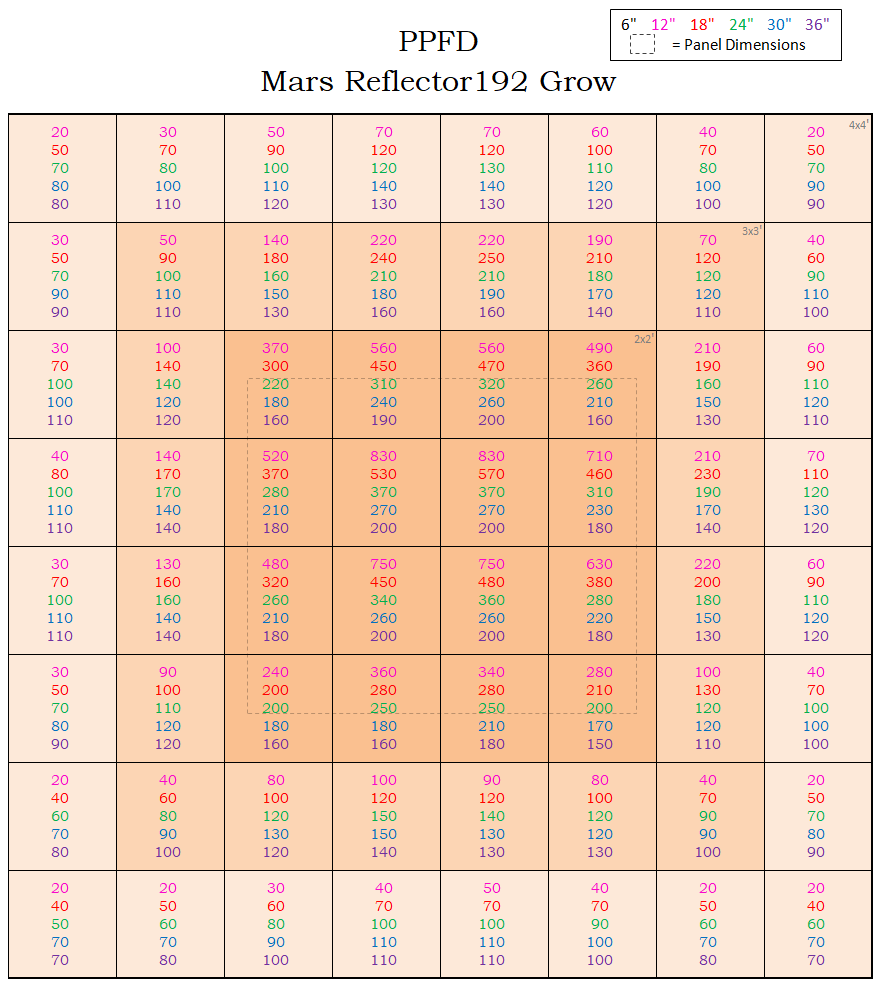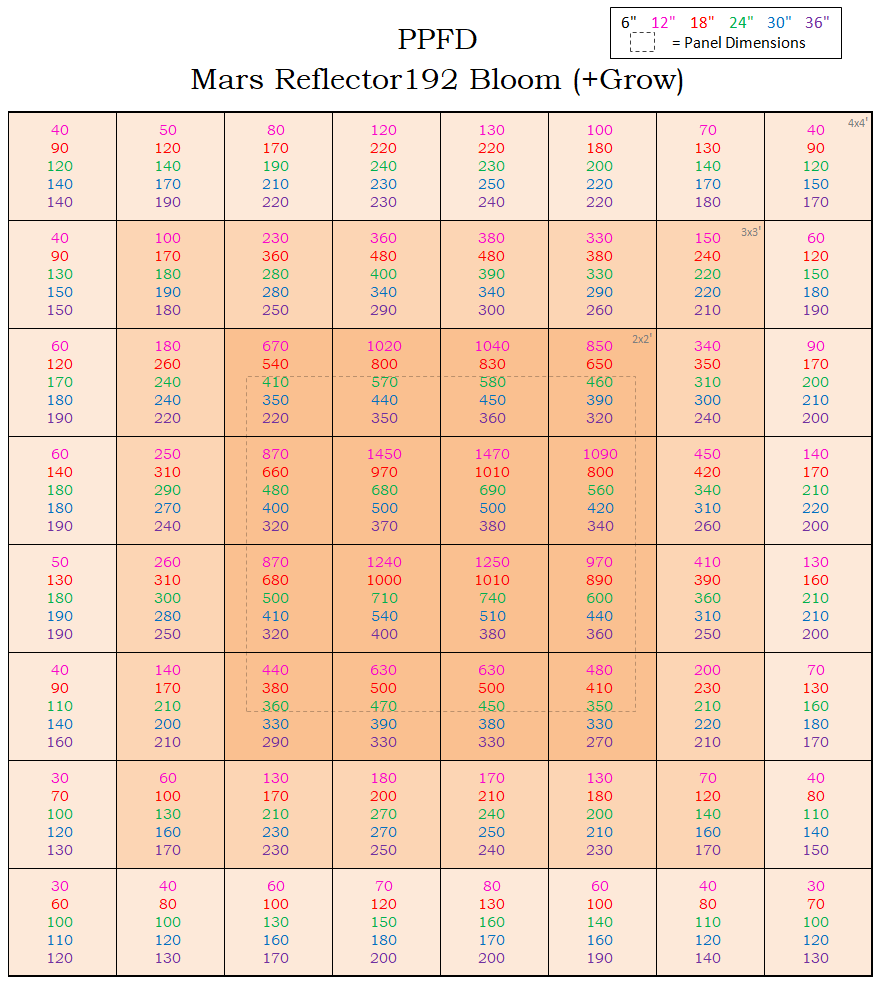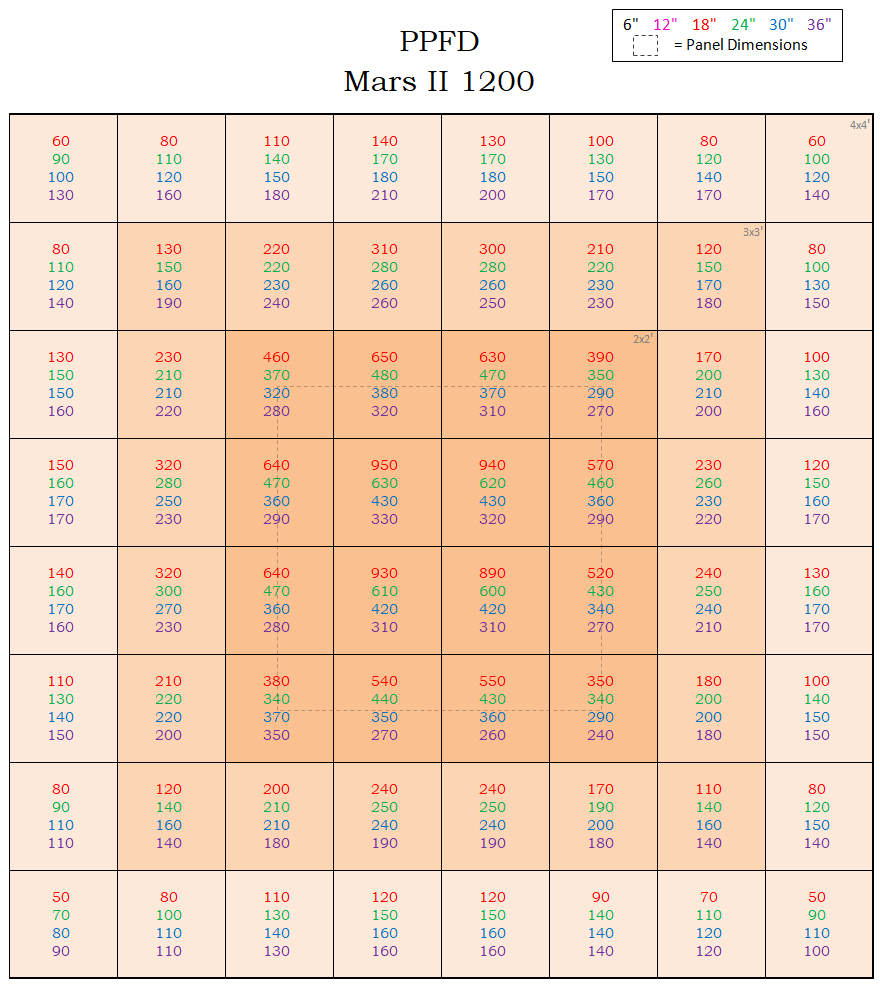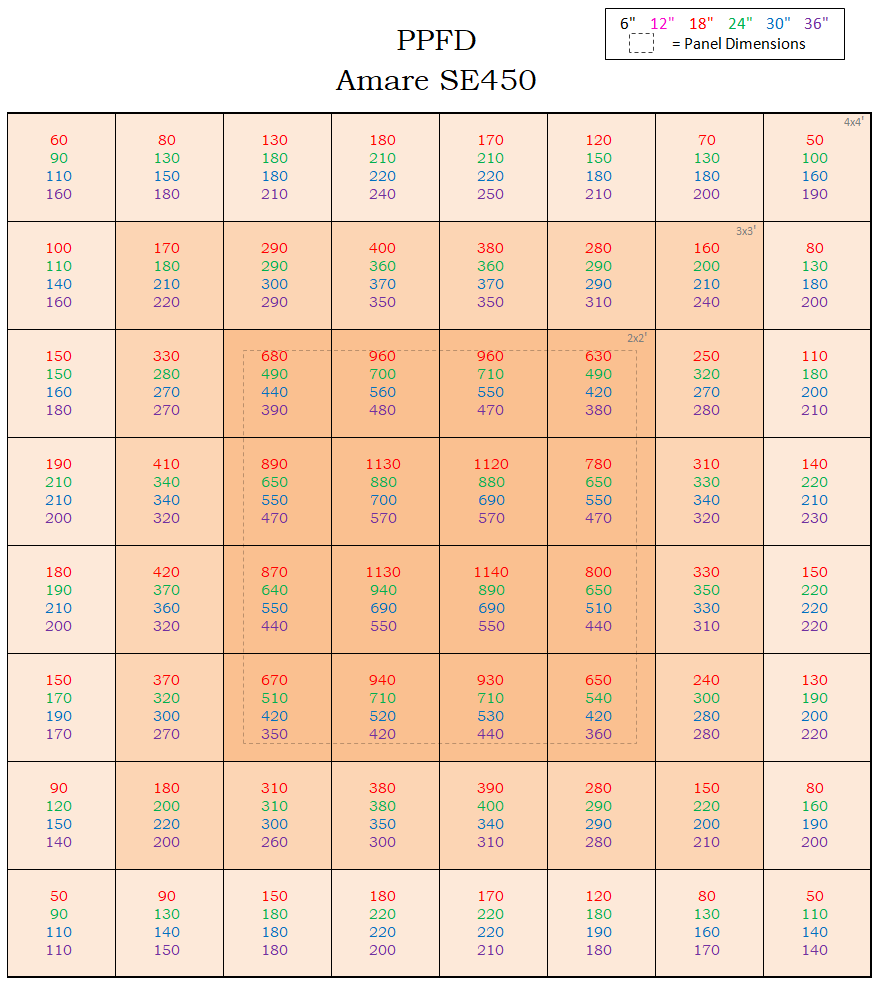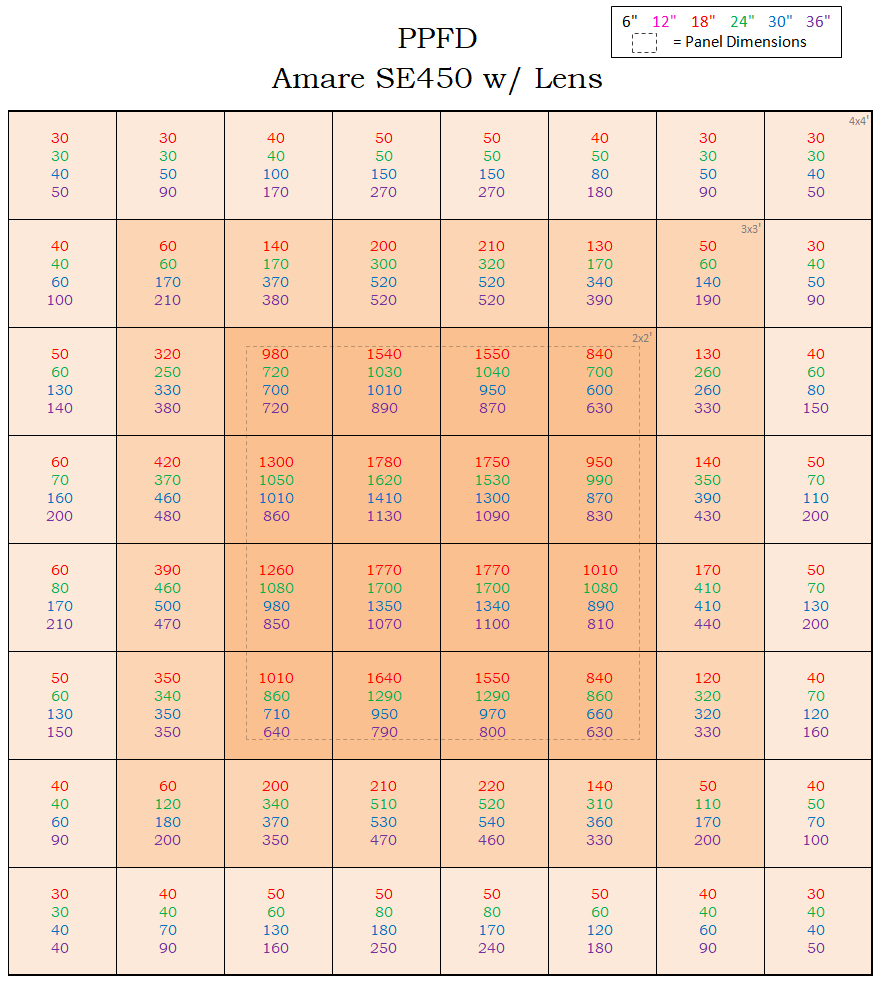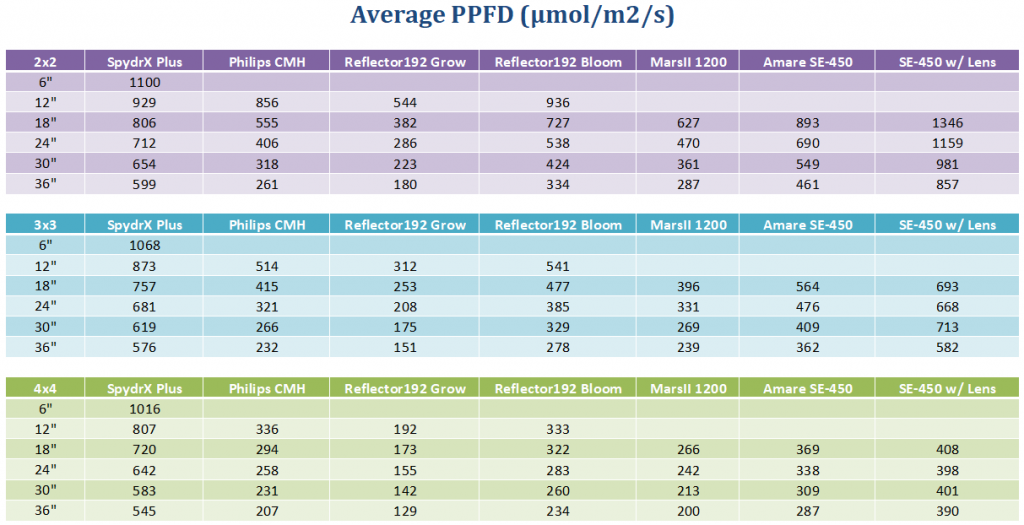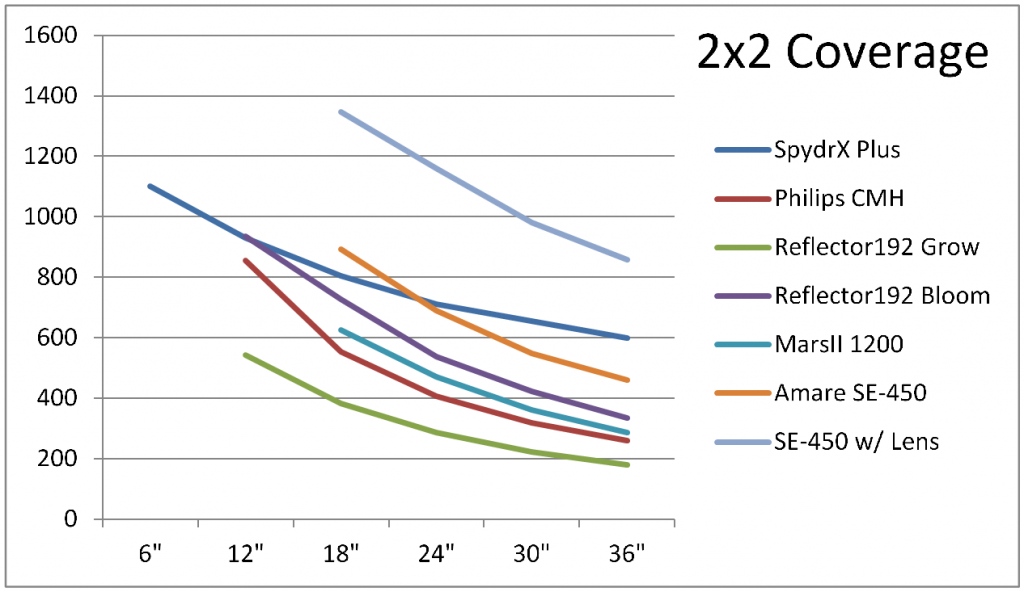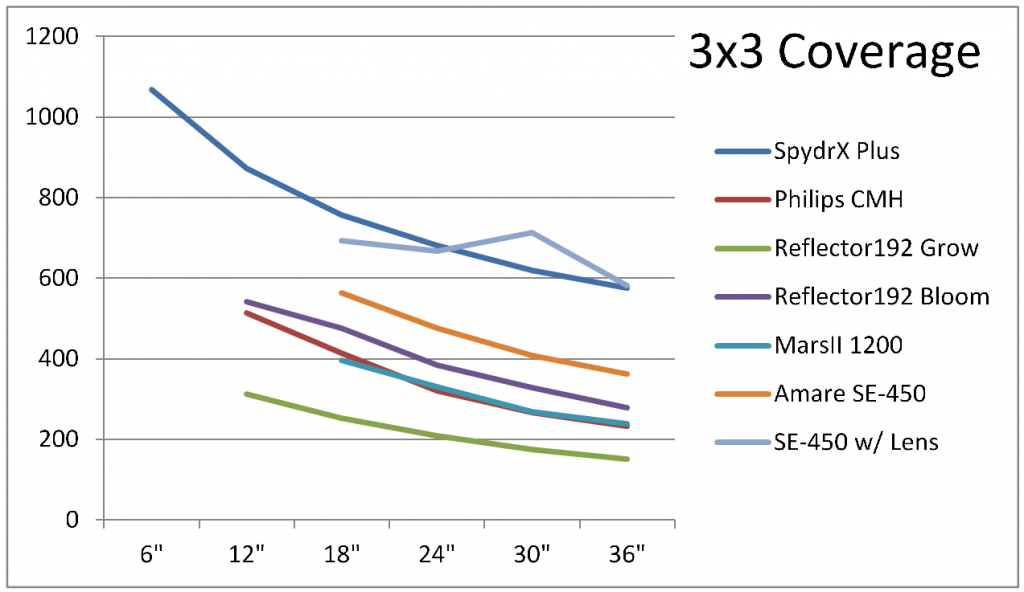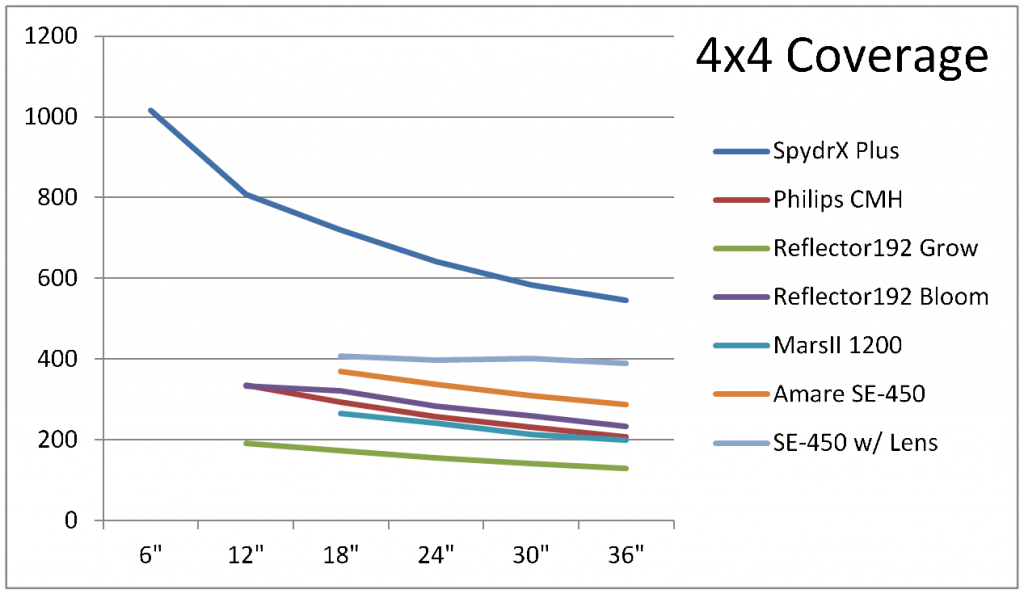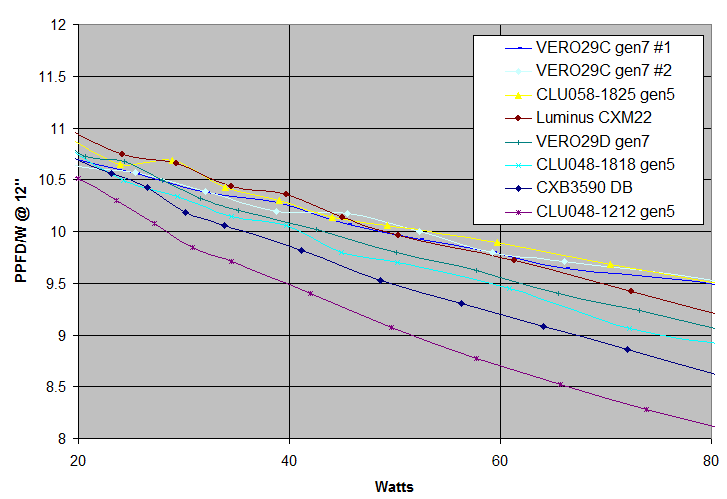ConstantGreen
New Member
Hello, this will be a continuation of my last thread, where I hand-measured and plotted the PPFD of Amare and Mars LED's with a hydrofarm PAR meter. Since then, I've also measured the Mars Reflector 192, Philips CMH 315w, etc. The point of this research is to determine the optimal footprint and height to use these grow lights to get the best results. Manufacturer recommended footprints have been misleading in the past and to grow most efficiently you need to know the PPFD falling on your plants.
What the par is PPFD? PAR just means Photosynthetically Active Radiation; it's not a measurement, just defining the range 400-700nm. 400-700nm is used by plants for photosynthetic growth and is a more specific range of the light spectrum for horticulture than lumens which is the range of light visible to the human eye. PPF is the total amount of PAR photons a panel emits and is measured by the manufacturer in one of those fancy spheres. But PPF is not exactly reflective of how many photons are hitting your canopy. Handheld PAR meters are measuring PPFD, which is the amount of par photons hitting a square meter per second.

(not my graph)
This study, published in 2009, established that cannabis sativa grows best at 30 degrees celsius and will grow quicker from increased PPFD, capping off in the 1500's. There's a diminishing return however. At 300 PPFD, cannabis grows at about 45% speed. Increase that to 800 PPFD, and cannabis grows at about 85% speed. That 40% gain for 500 extra PPFD is easily achievable. But to max out at 100%, you would need to go all the way to 1500 PPFD, nearly doubling the light intensity for a small 15% gain over 800 PPFD.
The best flowers will no doubt be grown at the highest PPFD, regardless of efficiency. It's up to you to make the decision between what's important to you between cost, efficiency, and quality. These graphs will hopefully help others decide which light is best for their space and what heights they need to be at for clones, seeds, veg, flowering cannabis.
Optimal PPFD for Cannabis Stages:
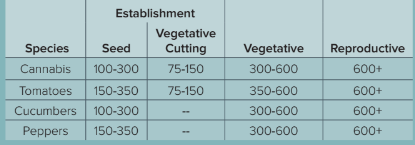
(table by Fluence Bioengineering)
My testing was done in a 4x4 grow tent, taking measurements on the floor with a handheld hydrofarm PAR meter. The 4x4' testing plane was divided into 6" squares and PPFD values were measured at the center of each square. The meter sometimes swings up to 100 PPFD in either direction, particularly for the Mars panels. I just took the average in this case, but I think it was because the blue and red spectrums are different intensities and it was confusing the meter. The SE450, Spydrx Plus, and CMH were much more stable on the PAR meter, maybe because of the "full-spectrum" of white light.
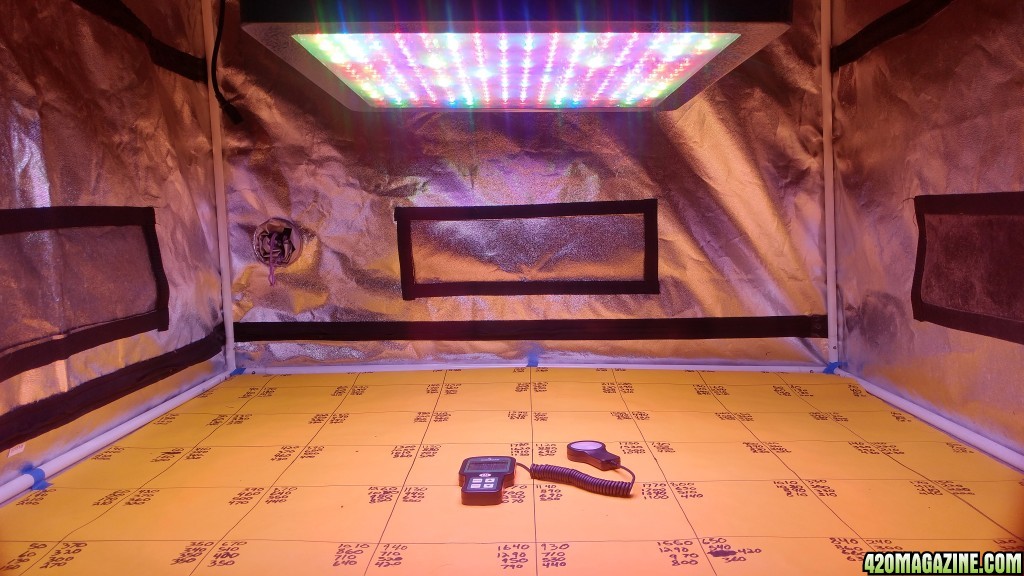
Factors that may tamper with the accuracy of my data or your own results would be the quality of the par meter, positioning of the light source, age of the light, the reflectivity of the tent, the tent door being open or any other light leaks while taking data. There's a huge difference in PPFD directly below the panel, compared to just inches outside of the direct footprint. The difference on the edge of the footprint could be more than 500 PPFD across a couple inches. Even though I took data every 6", if that footprint edge fell in or outside of my data points, that could make a big difference in the graphs. But the vast quantity of data points every 6" at multiple heights should dampen those factors in the averages. The panel dimensions are included in the graphs so you can see how dramatically the PPFD drops outside of the actual footprint. Look into the Inverse Square Law to read more about why this is important.
My first light was the MarsII 1200. It is marketed for a 4x4 foot grow. I used it in a 3x3' though and I'll show you why you should too. Sadly, the MarsII 1200 is probably only good for a 2x2' space if you really wanted to push for the perfect flowers with CO2 supplementation and everything else maxed out. It will no doubt grow cannabis in a 4x4' space, but the outside 1' ring of that tent is going to be getting only 150 PPFD which is only 25% of maximum growth rate. This sparked my quest to buy a meter and different lights to answer the question: Which light can actually flower a 4x4' tent with above average results?
What the par is PPFD? PAR just means Photosynthetically Active Radiation; it's not a measurement, just defining the range 400-700nm. 400-700nm is used by plants for photosynthetic growth and is a more specific range of the light spectrum for horticulture than lumens which is the range of light visible to the human eye. PPF is the total amount of PAR photons a panel emits and is measured by the manufacturer in one of those fancy spheres. But PPF is not exactly reflective of how many photons are hitting your canopy. Handheld PAR meters are measuring PPFD, which is the amount of par photons hitting a square meter per second.

(not my graph)
This study, published in 2009, established that cannabis sativa grows best at 30 degrees celsius and will grow quicker from increased PPFD, capping off in the 1500's. There's a diminishing return however. At 300 PPFD, cannabis grows at about 45% speed. Increase that to 800 PPFD, and cannabis grows at about 85% speed. That 40% gain for 500 extra PPFD is easily achievable. But to max out at 100%, you would need to go all the way to 1500 PPFD, nearly doubling the light intensity for a small 15% gain over 800 PPFD.
The best flowers will no doubt be grown at the highest PPFD, regardless of efficiency. It's up to you to make the decision between what's important to you between cost, efficiency, and quality. These graphs will hopefully help others decide which light is best for their space and what heights they need to be at for clones, seeds, veg, flowering cannabis.
Optimal PPFD for Cannabis Stages:

(table by Fluence Bioengineering)
My testing was done in a 4x4 grow tent, taking measurements on the floor with a handheld hydrofarm PAR meter. The 4x4' testing plane was divided into 6" squares and PPFD values were measured at the center of each square. The meter sometimes swings up to 100 PPFD in either direction, particularly for the Mars panels. I just took the average in this case, but I think it was because the blue and red spectrums are different intensities and it was confusing the meter. The SE450, Spydrx Plus, and CMH were much more stable on the PAR meter, maybe because of the "full-spectrum" of white light.

Factors that may tamper with the accuracy of my data or your own results would be the quality of the par meter, positioning of the light source, age of the light, the reflectivity of the tent, the tent door being open or any other light leaks while taking data. There's a huge difference in PPFD directly below the panel, compared to just inches outside of the direct footprint. The difference on the edge of the footprint could be more than 500 PPFD across a couple inches. Even though I took data every 6", if that footprint edge fell in or outside of my data points, that could make a big difference in the graphs. But the vast quantity of data points every 6" at multiple heights should dampen those factors in the averages. The panel dimensions are included in the graphs so you can see how dramatically the PPFD drops outside of the actual footprint. Look into the Inverse Square Law to read more about why this is important.
My first light was the MarsII 1200. It is marketed for a 4x4 foot grow. I used it in a 3x3' though and I'll show you why you should too. Sadly, the MarsII 1200 is probably only good for a 2x2' space if you really wanted to push for the perfect flowers with CO2 supplementation and everything else maxed out. It will no doubt grow cannabis in a 4x4' space, but the outside 1' ring of that tent is going to be getting only 150 PPFD which is only 25% of maximum growth rate. This sparked my quest to buy a meter and different lights to answer the question: Which light can actually flower a 4x4' tent with above average results?



